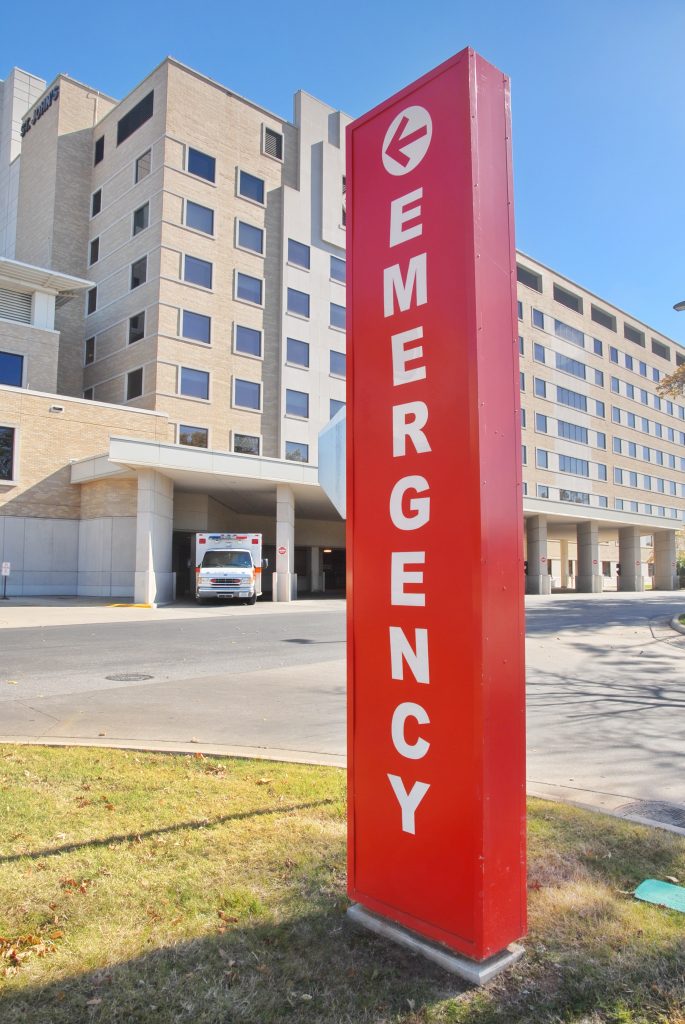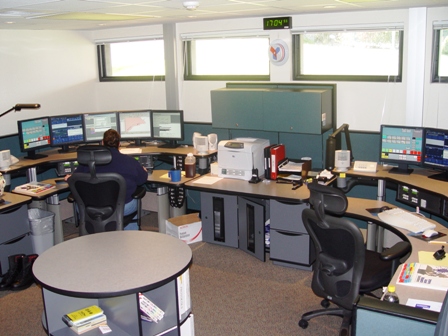So, you’ve probably heard about air ambulances and how they can save lives in emergency situations. But have you ever wondered what goes on behind the scenes of an air ambulance dispatch center? Well, let me give you a glimpse into this intriguing world. At an air ambulance dispatch center, a team of highly trained professionals work tirelessly to coordinate the complex process of dispatching and managing air ambulances. From receiving distress calls to coordinating with hospitals and pilots, these dispatchers play a crucial role in ensuring that patients receive the timely and efficient care they desperately need. Curious to know more? Let’s take a closer look at what really happens behind the scenes of an air ambulance dispatch center.

The Importance of an Air Ambulance Dispatch Center
When it comes to life-saving missions, time is of the essence. That’s where an air ambulance dispatch center plays a crucial role. This vital facility serves as the coordinating hub for air ambulance services, ensuring efficient response times and seamless coordination with multiple agencies. Let’s delve into the significance of an air ambulance dispatch center and the various aspects associated with it.
Coordinating Life-Saving Missions
The primary responsibility of an air ambulance dispatch center is to coordinate life-saving missions. When faced with a medical emergency, every second counts, and the dispatch center ensures that the most appropriate air ambulance is dispatched promptly. Whether it’s a critical patient transfer or an emergency evacuation, the dispatch center plays a pivotal role in coordinating these complex operations.
Ensuring Efficient Response Times
One of the key advantages of an air ambulance dispatch center is its ability to ensure efficient response times. With a network of air ambulance providers at their fingertips, dispatchers can quickly assess the urgency of a situation and determine the most appropriate response. By working closely with medical teams, dispatchers can rapidly deploy an air ambulance equipped with the necessary medical equipment and personnel to provide the required care.
Collaborating with Multiple Agencies
In the realm of emergency services, collaboration is essential. An air ambulance dispatch center serves as a central point of contact, facilitating seamless coordination among multiple agencies. From working with ground emergency services to liaising with 911 dispatch centers, dispatchers ensure smooth communication and collaboration. By bringing together various entities involved in emergency response, the dispatch center optimizes the overall efficiency of air ambulance operations.
The Role of Dispatchers
At the heart of an air ambulance dispatch center are the highly skilled professionals known as dispatchers. These individuals are the backbone of the operation, responsible for monitoring and communicating throughout the mission, navigating complex logistics, and ensuring the safe and timely transport of patients.
Highly Skilled Professionals
Dispatchers are trained professionals with a deep understanding of medical and emergency response protocols. They possess the knowledge and expertise necessary to assess the urgency of a situation, determine the appropriate level of care required, and make critical decisions in high-pressure scenarios. Their ability to think critically and make swift decisions is essential for ensuring successful outcomes in life-saving missions.
24/7 Monitoring and Communication
Medical emergencies can occur at any time, day or night. That’s why dispatch centers operate around the clock, ensuring 24/7 monitoring and communication. Dispatchers are always available to receive calls, assess the situation, and coordinate the dispatch of an air ambulance. Their constant vigilance and availability are crucial for providing timely assistance to those in need.
Navigating Complex Logistics
Coordinating air ambulance missions involves navigating complex logistics. Dispatchers must take into account factors such as distance, airspace restrictions, weather conditions, and availability of appropriate aircraft. By leveraging their expertise and using state-of-the-art technology, dispatchers carefully plan and execute each mission, ensuring the efficient transfer of patients from one location to another.

The Technology Behind Air Ambulance Dispatch Centers
Behind every successful air ambulance dispatch center is a range of state-of-the-art communication and tracking systems. These advanced technologies enable dispatchers to efficiently coordinate missions, communicate with medical teams, and monitor the progress of each mission in real-time.
State-of-the-Art Communication Systems
Effective communication is vital in emergency situations, and air ambulance dispatch centers rely on cutting-edge communication systems to achieve seamless coordination. These systems enable dispatchers to communicate with air ambulance crews, medical teams, ground emergency services, and other relevant stakeholders. By utilizing dedicated communication channels and prioritizing critical information, dispatchers ensure that everyone involved is on the same page.
Global Positioning Systems
Navigating the skies requires precise location information, and that’s where global positioning systems (GPS) come into play. Dispatchers utilize GPS technology to determine the location of the air ambulance, track its progress, and guide it to the destination safely. With real-time location tracking, dispatchers have a clear view of the mission’s progress, ensuring efficient coordination and adherence to schedules.
Real-Time Monitoring and Tracking
Real-time monitoring and tracking are essential for the smooth operation of air ambulance dispatch centers. With advanced tracking systems, dispatchers can continuously monitor the status of each mission, ensuring that everything is progressing as planned. Real-time updates on the location and condition of the patient, as well as the air ambulance itself, enable dispatchers to make informed decisions and provide necessary support throughout the mission.
Training and Qualifications for Dispatchers
To excel in their role, air ambulance dispatchers undergo rigorous training and possess a diverse skill set. Their qualifications encompass medical and emergency response knowledge, effective decision-making skills, and ongoing training and certification.
Medical and Emergency Response Knowledge
Dispatchers must have a solid understanding of medical terminology, emergency response protocols, and the intricacies of air ambulance operations. This knowledge allows them to accurately assess the urgency of a situation, provide appropriate medical advice over the phone, and effectively coordinate the dispatch of an air ambulance. By staying updated on the latest medical advancements and emergency response techniques, dispatchers can deliver the highest level of support to patients and medical teams.
Effective Decision-Making Skills
In high-pressure situations, dispatchers are often faced with making critical decisions that can directly impact patient outcomes. Their ability to think quickly, analyze situations, and make informed decisions is crucial. Effective decision-making skills, honed through training and experience, enable dispatchers to navigate complex scenarios, prioritize tasks, and ensure that the right resources are deployed promptly.
Continuous Training and Certification
The field of emergency medical services is constantly evolving, and dispatchers must stay up to date with the latest practices and technologies. Continuous training and certification programs provide dispatchers with the opportunity to enhance their skills, expand their knowledge base, and adapt to changing circumstances. By investing in their professional development, dispatchers can deliver the highest quality of service and maintain their proficiency in the increasingly complex field of air ambulance dispatch.
Coordinating Air Ambulance Transports
Coordinating air ambulance transports requires meticulous planning, attention to detail, and a thorough understanding of medical needs. Dispatchers play a critical role in assessing urgency, securing appropriate aircraft, and coordinating ground support services.
Assessing Urgency and Medical Needs
When a request for an air ambulance transport comes in, dispatchers must assess the urgency of the situation and determine the level of care required. This involves gathering information about the patient’s condition, consulting with medical professionals, and evaluating the available resources. By accurately assessing the urgency and medical needs, dispatchers can ensure that the most appropriate response is provided, saving valuable time in life-threatening situations.
Securing Appropriate Aircraft
Matching the patient’s medical needs with the right aircraft is essential for a successful air ambulance transport. Dispatchers consider factors such as the patient’s medical condition, the distance of the transport, and the required equipment. Whether it’s a fixed-wing aircraft for long-distance transfers or a helicopter for immediate medical interventions, dispatchers work closely with air ambulance providers to secure the most suitable aircraft for each mission.
Coordinating Ground Support
A smooth air ambulance transport requires coordination not only in the air but also on the ground. Dispatchers collaborate with ground support services to ensure a seamless transition from the medical facility to the aircraft and vice versa. This involves coordinating ground transportation, providing essential medical equipment, and facilitating efficient communication between all parties involved. By overseeing the entire transport process, dispatchers ensure that no detail is overlooked, and the patient’s well-being remains the top priority.
Communication with Medical Teams
Effective communication is paramount in air ambulance operations, and dispatchers play a crucial role in facilitating communication between medical teams, air ambulance crews, and other relevant entities. Their goal is to provide detailed patient information, offer medical consultations and support, and ensure seamless transitions.
Providing Detailed Patient Information
To ensure proper care is provided throughout the transport, dispatchers gather and relay detailed patient information to the medical teams involved. This includes medical history, current condition, special considerations, and any specific instructions. By providing comprehensive patient information, dispatchers assist medical teams in delivering tailored care and enhancing the patient’s overall well-being.
Medical Consultations and Support
Dispatchers act as a valuable resource for medical teams, offering support and guidance throughout the air ambulance transport. They are available to consult with medical professionals, answer questions, and provide medical advice when needed. By collaborating with the medical teams, dispatchers help ensure that the highest level of care is provided during the transport, further enhancing patient outcomes.
Ensuring Seamless Transitions
Transitions can be challenging during air ambulance transports, especially when transferring care from one medical facility to another. Dispatchers bridge this gap by coordinating communication and logistics between all parties involved. Whether it’s coordinating an ambulance transfer on the ground or ensuring a smooth handoff between medical teams, dispatchers work diligently to ensure seamless transitions, minimizing disruption to patient care.
Collaboration with Ground Emergency Services
Air ambulance dispatch centers are not isolated entities; they work closely with ground emergency services to provide comprehensive assistance in emergency situations. Dispatchers act as a liaison between different agencies, coordinate ground transportation, and support first responders.
Liaising with 911 Dispatch Centers
In emergency situations, 911 dispatch centers are often the first point of contact for individuals in need of assistance. Air ambulance dispatch centers collaborate with these centers, providing additional support and information when air ambulance services are required. By integrating their operations and sharing critical details, dispatchers help ensure a seamless response to emergencies, maximizing the chances of a positive outcome.
Coordinating Ground Transportation
Air ambulance transports often require ground transportation to connect the medical facility with the aircraft or vice versa. Dispatchers work closely with ground transportation providers, ensuring that ambulances or other appropriate vehicles are available when and where they are needed. This coordination ensures that patients can be seamlessly transferred to and from the air ambulance, minimizing any inconvenience and allowing for a smooth transition of care.
Supporting First Responders
First responders are the front line of emergency care, and air ambulance dispatch centers play a supporting role in their operations. Dispatchers provide necessary information, guidance, and resources to first responders, enabling them to make informed decisions and provide initial care before an air ambulance arrives. By collaborating closely with ground emergency services, dispatchers contribute to a coordinated and efficient response to emergency situations.
The Challenges of Air Ambulance Dispatch
Air ambulance dispatch is not without its challenges. Dispatchers are faced with various obstacles, including weather and environmental considerations, navigating airspace restrictions, and managing unforeseen events.
Weather and Environmental Considerations
Weather conditions and other environmental factors can significantly impact air ambulance missions. Dispatchers carefully monitor weather patterns and assess the feasibility of each mission based on current conditions. In cases where adverse weather prohibits safe flight, dispatchers must quickly adapt plans and explore alternative solutions. Their ability to navigate these challenges ensures the safety of both the patients and the air ambulance crews.
Navigating Airspace Restrictions
Airspace restrictions can pose challenges during air ambulance dispatch. Certain areas may have restrictions due to military operations, natural disasters, or other factors. Dispatchers must navigate these restrictions and find alternative flight paths to ensure timely arrival at the destination. By maintaining up-to-date information on airspace restrictions, dispatchers can adapt plans and make the necessary adjustments to facilitate smooth operations.
Managing Unforeseen Events
In the realm of emergency medical services, unforeseen events are bound to occur. Dispatchers must be prepared to handle unexpected situations and quickly adapt their strategies accordingly. Whether it’s a sudden change in the patient’s condition, an equipment malfunction, or an unscheduled diversion, dispatchers must calmly and efficiently respond to ensure the best possible outcome. Their ability to think on their feet and promptly implement contingency plans is invaluable in managing unforeseen events.
Maintaining Quality Assurance
Quality assurance is of paramount importance in air ambulance dispatch centers. With lives on the line, adherence to safety protocols, continuous performance monitoring, and learning from incident analysis are critical for providing the highest level of care.
Ensuring Adherence to Safety Protocols
Safety is the top priority in air ambulance operations, and dispatchers play a vital role in ensuring adherence to safety protocols. They meticulously follow established procedures, verify the competence of air ambulance providers, and monitor the compliance of all entities involved. By maintaining a rigorous focus on safety, dispatchers contribute to creating a secure environment for patients, crews, and medical teams.
Continuous Performance Monitoring
Continuous performance monitoring is a key aspect of maintaining quality in air ambulance operations. Dispatchers actively monitor the performance of air ambulance providers, evaluate response times, and review the effectiveness of communication systems. By regularly assessing performance metrics, dispatchers can identify areas for improvement and implement measures to enhance overall efficiency and effectiveness.
Learning from Incident Analysis
In the pursuit of continuous improvement, dispatch centers conduct thorough incident analysis. Dispatchers and relevant stakeholders assess any untoward occurrences, identify contributing factors, and implement strategies to prevent similar incidents in the future. By learning from these analyses, dispatchers refine their processes, procedures, and training protocols, ensuring that lessons from each incident are applied to enhance the level of care provided.
The Future of Air Ambulance Dispatch Centers
As technology continues to advance, the future of air ambulance dispatch centers promises to bring further innovation and efficiency to the field. Integration of artificial intelligence, the implementation of drone technology, and enhanced data analytics are just a few areas that hold tremendous potential.
Integration of Artificial Intelligence
Artificial intelligence (AI) has the potential to revolutionize many industries, and air ambulance dispatch centers are no exception. By leveraging AI algorithms, dispatchers can automate certain processes, analyze complex data sets, and provide real-time predictions and recommendations. AI-powered systems can assist in decision-making, optimize resource allocation, and improve overall operational efficiency.
Implementation of Drone Technology
Drone technology offers exciting possibilities in the realm of air ambulance dispatch. In certain situations, drones can provide quick response times and access to remote areas, especially in emergency situations where traditional aircraft may face limitations. Dispatch centers can utilize drones for aerial assessments, delivering essential medical supplies, or providing initial support until a manned air ambulance arrives. The implementation of drone technology has the potential to expedite emergency response and save more lives.
Enhanced Data Analytics
Data analytics is a powerful tool when it comes to improving efficiency and decision-making in air ambulance dispatch centers. By analyzing vast amounts of data generated during missions, dispatchers can gain valuable insights into response times, resource allocation, and patient outcomes. This data-driven approach allows for continuous improvement, identifying trends, and streamlining processes to optimize the overall performance of air ambulance operations.
In conclusion, the role of an air ambulance dispatch center cannot be overstated. The center serves as the nerve center for coordinating life-saving missions, ensuring efficient response times, and collaborating with multiple agencies. Dispatchers, the highly skilled professionals behind the scenes, leverages state-of-the-art technology and their extensive training to navigate complex logistics and provide seamless coordination. As the future unfolds, the integration of AI, drone technology, and enhanced data analytics holds great promise for the continuous enhancement of air ambulance dispatch centers and the lifesaving services they provide.



